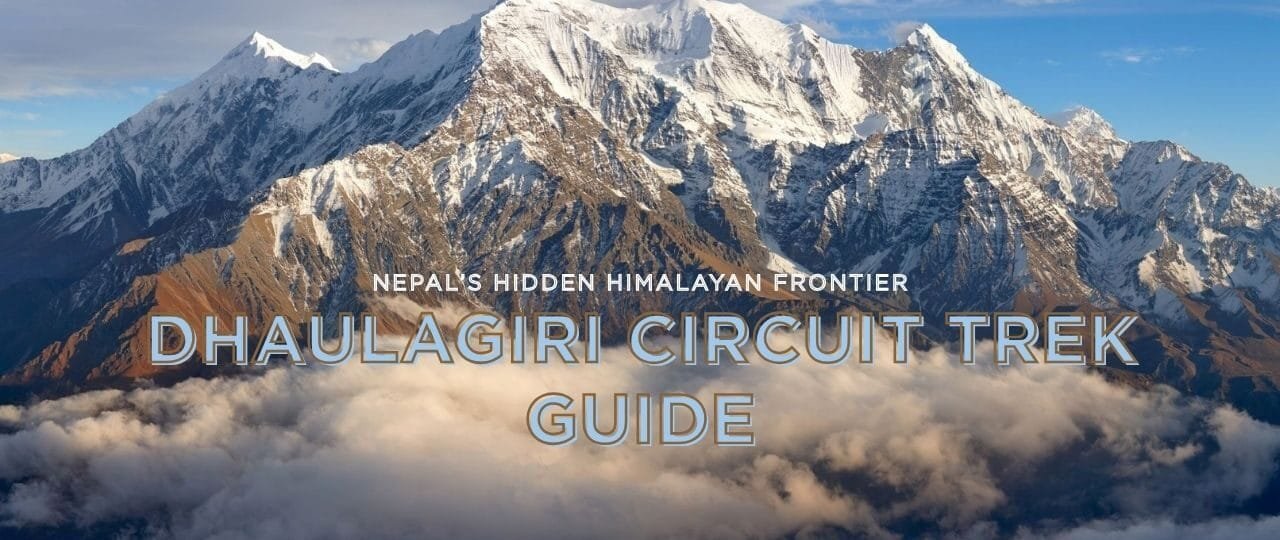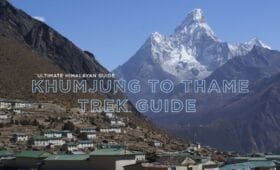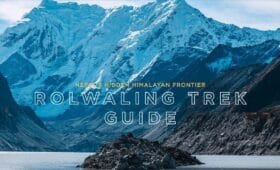The Dhaulagiri Circuit Trek Guide offers intrepid trekkers a challenging route through one of Nepal’s most spectacular yet less-traveled regions. Rising to 8,167 meters, Mount Dhaulagiri is the world’s seventh-highest peak, and the Dhaulagiri Circuit Trek Itinerary encircles it with dramatic mountain passes, secluded valleys, and mesmerizing glaciers. The journey around Dhaulagiri is a pinnacle achievement for those craving adventure in a wilderness largely untouched by tourist crowds.
In this thorough Dhaulagiri Circuit Trek guide, we’ll dissect every facet of the Trek—from typical Dhaulagiri Circuit Trek Cost and lodging options to recommended times, difficulty, route maps, best practices, and philanthropic volunteering opportunities. We’ll also dive into key details such as altitude considerations, weather patterns, gear essentials, and how to integrate your trek with a meaningful cause by engaging in community projects in nearby villages. Whether you’re a seasoned trekker seeking a formidable Himalayan venture or a dedicated traveler drawn to remote trekking’s mystique, the Dhaulagiri Circuit Trek promises an unparalleled experience in Nepal’s western highlands.
Introduction
1. Introduction: Why the Dhaulagiri Circuit Trek?
Few treks in Nepal compare to the sheer scope and isolation of the Dhaulagiri Circuit Trek. While the Annapurna and Everest regions bustle with established teahouses, this route plunges you into a rugged expanse with only a few remote settlements and seasonal campsites. The journey’s highlight is crossing the French Pass (~5,360m) and Dhampus Pass (~5,200m), each unveiling spectacular panoramas of Dhaulagiri, Tukuche Peak, and the Annapurna range.
Statistic: According to the Trekking Agencies Association of Nepal, fewer than 1,000 trekkers tackle the Dhaulagiri circuit annually. This preserves the region’s pristine nature for those willing to face its challenges. In advanced sections, altitudes crest near 5,500m, demanding robust fitness and experience with multi-day treks. Yet the reward is an intimate communion with Himalayan glaciers, vantage points unspoiled by mass tourism, and personal triumph.
Quote:
“I’ve trekked Annapurna multiple times, but Dhaulagiri Circuit Trek was a different realm—pure wilderness, minimal crowds, and unimaginable glacier views,” says Mary, a 35-year-old nurse from Canada who completed the circuit last spring.
2. Historical & Cultural Overview
Dhaulagiri was first summited in 1960 by a Swiss-Austrian-Nepali expedition. Before that, local ethnicities (especially Gurung, Magar, and Thakali in lower altitudes) lived off farming and herding. The region’s name, “White Mountain,” underscores the colossal snowy face that dwarfs surrounding peaks. Early traders occasionally skirted these valleys, forging routes across treacherous passes for salt and wool commerce.
Today, the Dhaulagiri Circuit Trek remains one of Nepal’s ultimate mountainous frontiers, overshadowed by more popular circuits. Cultural influences vary, from Hindu communities in low hills near Beni to Tibetan-Buddhist enclaves around the hidden valleys above Italian Base Camp. Such diversity fosters an immersive trekking environment that merges farmland traditions with high-altitude yak caravans, culminating in an expedition-like atmosphere.
Trek Itinerary
3. Key Highlights of Dhaulagiri Circuit Trek Itinerary
A typical Dhaulagiri Circuit Trek Itinerary lasts 17–21 days, although faster or slower variants exist. Below is a popular outline:
- Day 1–2: Pokhara / Kathmandu → Beni → Darbang (~1,100m)
A ~9-hour drive from Pokhara or Kathmandu leads to Beni, continuing on a jeep to Darbang. Some treks begin from Beni, adding an extra day’s walk. - Day 3–5: Darbang → Takum → Muri (~1,850m) → Boghara (~2,080m)
Trails wind through terraced fields, Magar villages, and forested ridges. Muri is culturally rich, and farmland spans the hillsides. - Day 6–8: Doban (~2,520m) → Sallaghari / Italian Base Camp (~3,660m)
You’ll gradually climb near the Myagdi Khola valley, passing teahouses until Italian Base Camp. This is a significant acclimatization stop with scenic glacier views. - Day 9–11: Japanese Camp (~4,200m) → Dhaulagiri Base Camp (~4,750m)
The route becomes alpine, crossing scree or moraine. Dhaulagiri Base Camp showcases the massif’s towering north face. - Day 12–14: French Pass (~5,360m) → Hidden Valley (~5,050m) → Dhampus Pass (~5,200m)
The trek’s highlight is crossing two challenging passes. The Hidden Valley, an arid plateau, offers glimpses of the Tukuche and Sita Chuchura peaks. - Day 15–17: Yak Kharka → Marpha (~2,670m)
A steep descent from Dhampus Pass eventually merges with the Annapurna region near Marpha in the Kali Gandaki corridor. Some exit via Jomsom for a short flight or bus.
Dhaulagiri Circuit Trek Duration stands around 3 weeks, factoring in rest or contingency days. The route’s remote nature means most nights above Italian Base Camp involve tented camping, as teahouses become sparse.
4. Understanding the Dhaulagiri Circuit Trek Difficulty
Rated among Nepal’s most challenging routes, the Dhaulagiri Circuit Trek Difficulty revolves around steep ascents, glacial traverses, high passes exceeding 5,000m, and minimal lodging infrastructure. You’ll carry or hire gear for possible camping from Italian Base Camp onward. Harsh weather can hamper crossing passes like the French Pass or Dhampus Pass.
Fitness & Experience:
- Prior multi-day treks above 4,0are 00m recommended.
- Regular cardio (running, cycling) plus strength training for ~2 months prior.
- Basic mountaineering know-how (using crampons, crossing glaciers) if crossing in winter or after heavy snowfall.
5. Mapping Your Route: A Look at the Dhaulagiri Circuit Trek Map
A reliable Dhaulagiri Circuit Trek Map should highlight the following:
- Darbang / Muri: Lower farmland and initial walk.
- Boghara / Doban: Ascending through forested ridges.
- Italian Base Camp (~3,660m) and possibly “Japanese Camp” (~4,200m).
- Dhaulagiri Base Camp (~4,750m): Beneath the immense north face.
- French Pass (~5,360m) leading to Hidden Valley (~5,050m).
- After Dhampus Pass (~5,200m), you descend to the Annapurna region near Marpha.
Segments beyond the base camp remain glaciated or rocky, allowing route illusions to arise. Consult local guides, the daily weather, and potential avalanche threats near the passes.
Costing
6. How Much Does It Cost? Explaining the Dhaulagiri Circuit Trek Cost
The Dhaulagiri Circuit Trek Cost stands higher than many standard treks, reflecting gear, staff wages, and logistics:
- Permits:
- Annapurna Conservation Area Permit (~USD 30).
- Possibly a TIMS card (~USD 10–20).
- Transport:
- Jeep or bus from Pokhara/Kathmandu to Darbang (~USD 20–50).
- Return from Jomsom or Marpha by flight or bus.
- Food & Lodging:
- Low altitudes: teahouses ~USD 5–8 per night.
- Above Italian Base Camp: mostly tent camping. Expect ~USD 15–25 daily for group cooking, if with a trekking crew.
- Guide / Porters:
- Licensed guide: ~USD 30–40/day. Porters: ~USD 20–25/day. Possibly a climbing guide if crossing challenging glacier segments.
- Camping Gear:
- Tents, sleeping bags (~-10°C rating), and cooking gear. Agencies provide these if booked in a Dhaulagiri Circuit Trek Package.
Expect ~USD 1,800–2,500 for a 20-day trek, factoring in gear rentals or packaged tours that handle tents, porters, and logistics. Solo or small group attempts might be cheaper but require extra planning.
7. Booking the Right Dhaulagiri Circuit Trek Package
Given minimal teahouse infrastructure above 3,600m, many travelers choose a Dhaulagiri Circuit Trek Package from specialized agencies. Key benefits:
- Permits & Transport: Freed from bureaucratic runs, plus organized rides to trailheads.
- Camping Crew: Porters or yaks, cooks, plus group gear for nights in remote basins.
- Guide Expertise: Minimizing route confusion or glacial crossing hazards.
- Meals & Safety: Warm camp dinners, daily briefings, and altitude management by experienced staff.
Compare packages carefully. Some operators specialize in advanced routes, while others might lack top-notch camping gear or high-altitude knowledge. Check references or Dhaulagiri Circuit Trek Reviews from past clients.
8. Securing Dhaulagiri Circuit Trek Permits
While not an officially “restricted area,” the route passes sections of the Annapurna Conservation Area. So Dhaulagiri Circuit Trek Permits generally include:
- Annapurna Conservation Area Permit (ACAP): ~USD 30.
- TIMS (Trekkers’ Information Management System): ~USD 10–20 if independent. For organized groups, ~USD 10.
- Possible Additional Permits: If your route touches restricted zones near Dolpo or beyond, you might need more permits, but typically not for the standard circuit.
Always check your operator’s advice or official channels for updated rules. Present your passport, visa, and photos at the appropriate permit offices in Pokhara or Kathmandu.
9. Dhaulagiri Circuit Trek Best Time: Seasons & Weather
Dhaulagiri Circuit Trek Weather can be severe at high passes. The best windows:
- Autumn (Sept–Nov): Crisp, stable, moderate day temps (~15°C at lower altitudes). Nights near freezing at base camp or passes. Peak trekking conditions.
- Spring (Mar-May): Blooming rhododendrons and stable mornings. Afternoons can bring haze or storms—crisp air above 4,000m.
- Winter (Dec–Feb): Fewer trekkers, sub-zero nights, and heavy snow can block passes. It is not recommended unless you have advanced winter trekking skills.
- Monsoon (Jun–Aug): Intense rains, muddy lower trails, potential landslides, and unpredictable glacial sections.
10. Hiring a Dhaulagiri Circuit Trek Guide
Given the route’s complexity (especially crossing glaciers or passes), a Dhaulagiri Circuit Trek Guide is strongly recommended. Even if you have Himalayan experience:
- Technical Skills: Some passes might require rope work or crampons.
- Local Insights: Minimizes risk of altitude sickness or route confusion.
- Cultural Advantage: They can interpret village norms, manage campsite negotiations, and expedite help if emergencies arise.
Expect to pay ~USD 30–40/day for an experienced guide, excluding tips. If you’re traveling with a group, you can split the cost.
Tips
11. Preparation & Tips for Success
11.1 Physical & Technical Training
- Cardio: Jog, cycle, or swim 4–5 times weekly for ~2 months pre-trek.
- Strength: Weighted squats, step-ups, or stair climbs replicate daily ascents with a loaded backpack.
- Technical Skills: If crossing glacier sections, familiarize yourself with crampons and ice axes. Basic rope knowledge helps if Tashi Lapcha or other passes are extra challenging.
11.2 Gear Essentials
- Layers: Thermal base, mid-layer fleece, a robust down jacket, waterproof outer.
- Footwear: Warm, well-worn trekking boots. Possibly mountaineering boots if crossing advanced glacier areas.
- Extras: A good sleeping bag (~-15°C comfort), trekking poles, a headlamp, and a personal medication kit.
11.3 Altitude Acclimatization
Dhaulagiri Circuit Trek Altitude surpasses 5,000m near French Pass and Dhampus Pass. Add at least one acclimatization day around the Italian Base Camp. Watch for mild headache, dizziness, or insomnia—signs you might need an extra rest day.
12. Stories from the Trail: Testimonials & Inspiration
Carlos’s Triumph
Carlos, a 32-year-old mountaineering enthusiast from Chile, found the Dhaulagiri Circuit Trek
“the perfect intermediate challenge. Crossing French Pass overshadowed any difficulty—once I glimpsed Dhaulagiri’s towering face, the sense of accomplishment soared. We had four nights of camping above 4,000m, and it was unbelievably raw, no sign of mass tourism.”
Local Impressions
Villagers in Muri or Bagar often mention few trekking groups, but each group invests significantly in local guides, porters, or produce. One teahouse owner near Doban says,
“We see fewer trekkers, yet their presence helps maintain these trails and fosters small business expansions, like purchasing new stoves or better seeds for farming.”
FAQs
13. Seven Most Frequently Asked Questions
How long is the Dhaulagiri Circuit Trek Duration?
The complete circuit typically ~ takes 17–21 days. Some fast-paced hikers might do it in 15, but crossing high passes normally requires extra days.
What is the Dhaulagiri Circuit Trek Difficulty level?
It’s considered one of Nepal’s most challenging. With altitudes over 5,000m, steep glacier traverses, and minimal teahouse infrastructure, it suits experienced trekkers.
How much does the Dhaulagiri Circuit Trek Cost?
Expect ~USD 1,800–2,500 for ~3 weeks, factoring in camping, porters, gear, and a guide. Costs vary by group size and trek style.
Which Dhaulagiri Circuit Trek Permits do I need?
At least the Annapurna Conservation Area Permit (~USD 30) plus a TIMS card (~USD 10–20). Some expansions might require extra permits if crossing other restricted zones.
When is the Dhaulagiri Circuit Trek Best Time?
Autumn (Sept–Nov) or spring (Mar-May) for stable weather, better pass crossings, and more apparent high-altitude conditions.
Is a Dhaulagiri Circuit Trek Guide mandatory?
Not officially for the base route, but strongly advised for safety and route-finding. A skilled guide (and sometimes climbing gear) is crucial if crossing advanced passes.
What is the highest altitude on the route?
French Pass stands at ~5,360m, Dhampus Pass at ~5,200m. Dhaulagiri Base Camp hovers around 4,750m.
Conclusion
With glacier-laden passes, towering 8,000m giants, and scant footprints of mass tourism, the Dhaulagiri Circuit Trek resonates as a trophy route for serious adventurers. Its robust altitudes, multi-day camping stints, and minimal crowd presence create an unfiltered Himalayan escapade, bridging personal challenges with breathtaking scenery. Whether drawn by the iconic silhouette of Dhaulagiri or the sense of forging your path, each day in these remote valleys underscores the spirit of exploration.
Community Development
Uniting Trekking & Community Development with ViN
At Volunteers Initiative Nepal (ViN), we champion merging adventure with altruism. By weaving philanthropic efforts into your Dhaulagiri Circuit Trek, you can help local communities flourish while you bask in the area’s splendor:
Share: Encourage friends, colleagues, or trekkers to pair their adventurous ambitions with mindful contributions.
Volunteer: Dedicate a few days before or after the trek to local schools or environmental projects near Beni or along the route’s lower villages.
Donate: Your support fosters education, healthcare, or infrastructure improvements, letting these Himalayan communities adapt sustainably to evolving tourism.
Intern: Apply your academic or professional skills—like environmental science, healthcare, or cultural research—to real local needs, bridging knowledge with impact.
Namaste, and let’s script a future where Himalayan routes deliver personal triumph and communal upliftment. May the Dhaulagiri Circuit Trek remain an emblem of synergy between epic trekking, empathy, and environmental stewardship.
Additional Tips
Additional Info & Practical Tips
While the significant aspects of the Dhaulagiri Circuit Trek are covered, specific nuances might further smooth your journey. The following insights address route expansions, advanced gear, volunteering specifics, and more:
1. Seasonal Weather & Temperature
1.1 Autumn
- Typically stable. Midday climbs are ~15°C at mid-altitudes but can be near 0°C above 4,500m. Pass nights drop below freezing. Crisp vistas daily.
1.2 Spring
- Slightly warmer. Mountain passes remain snowy, but daytime can be comfortable. Late spring storms might appear. Rhododendrons bloom in lower valleys.
1.3 Winter
- Risk of heavy snow blocking French Pass or Dhampus Pass. Nights near -15°C at base camp. Minimal teahouse support above Doban.
1.4 Monsoon
- Slippery lower trails, landslide risks. In high glacial areas, consistent rainfall can hamper crossing. Visibility might suffer.
2. Extended vs. Standard Route
- Complete Circuit: Summits near Tukuche Peak or advanced offshoots remain possible with climbing gear.
- Shorter Variation: Some skip crossing Dhampus Pass, returning after French Pass, though that’s seldom standard.
- Connections: You can end in Jomsom or even link to the Annapurna Circuit if you want an epic combined route.
3. Cultural Etiquette & Interaction
3.1 Magar, Gurung, Thakali Influence
Lower villages near Beni or Muri reflect Magar culture; in the Kali Gandaki corridor, Thakali traditions abound. Polite greetings (“Namaste”), modest attire, and open curiosity about local customs strengthen connections.
3.2 Lodge / Camping Scenes
In lower altitudes, teahouses are typically run by local families. Above ~3,600m, you’ll rely on tent setups. Even minimal interactions can reveal stories of how these communities endure harsh winters or celebrate festivals tied to mountain deity worship.
4. Potential Dangers
- Landslides in post-monsoon months around farmland or steep ridges.
- Crevasses near glacial segments from Dhaulagiri Base Camp onward.
- Cold Injuries (frostbite, hypothermia) if under-equipped at passes above 5,000m.
5. Pairing Volunteering with Dhaulagiri Region
5.1 Pre-Trek Projects
Volunteers Initiative Nepal can coordinate short stints near Beni’s outskirts or other mid-altitude villages. English tutoring or health awareness sessions might precede your trek.
5.2 On-Trek Engagement
Rolwaling-like volunteer stints are trickier due to the extreme altitude and frequent campsite transitions. However, if you pause in villages like Muri, you might do quick workshops or environment-themed sessions.
6. Return & Reflection
Once you exit the circuit near Marpha or Jomsom, many travelers enjoy a day or two in Pokhara or Kathmandu, recuperating in lakeside or city comforts. Reflecting on your expedition’s challenges fosters more profound personal growth. If you engage in philanthropic elements, you’ll also appreciate how small gestures can resonate deeply in mountainous communities.
7. Dhaulagiri Circuit Trek Reviews & Inspiration
Travel bloggers frequently describe the circuit as an “expedition-style experience” overshadowing shorter, more teahouse-friendly routes. Many rank it as a top-tier Himalayan challenge, praising the dramatic alpine crossing and the intangible serenity of glacial nights.




